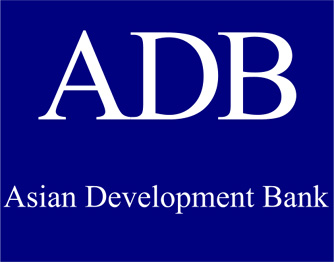DHAKA, Sep 26, 2018 (BSS) – Country Director of Asian Development Bank
(ADB) Manmohan Parkash today said the economy of Bangladesh is in a good
shape and it is possible to attain 8 percent growth rate in the current
fiscal since the country has a very strong foundation.
“Bangladesh economy is in a good shape and its growth momentum is likely
to continue. It has recorded over 7 percent GDP growth for three consecutive
years, reaching close to 8 percent now,” he said while launching the Asian
Development Outlook 2018 Update at ADB Resident Mission office in the city’s
Agargaon area.
ADB senior economist Soon Chan Hong and principal country specialist
Jyotsana Verma made a power-point presentation on the Outlook Update and the
overall operations of the ADB in Bangladesh.
About Bangladesh’s prospect of attaining 8 percent GDP growth in the
current fiscal based on the solid foundation of 7.9 percent GDP growth rate
in the last fiscal, Parkash said: “Yes, it is indeed possible. We already
have a very strong foundation and we are getting very close to it. But, it
means you also need to continue prudent macroeconomic policies, good debt
management and investing in human capital and new technologies”.
He assured that the ADB would continue to provide both financial and
technical support to Bangladesh in these areas.
“In terms of getting to 8 percent growth, it is possible. But, definitely
you need to continue with the same kind of policies and same kind of
environment. Again, the ease of doing business needs to be really supported
much more so you can attract higher FDI (foreign direct investment) and
higher private investment,” Parkash said.
According to the ADO 2018 Update, the GDP growth rate in the current
fiscal is expected to grow by 7.5 percent against the fiscal target of 7.8
percent with continued strong consumption and public investment.
Besides, the export performance is expected to remain steady although
expansion in import is likely to be slower. On the supply side, strong
industrial growth is likely to continue and contribute to the stable growth.
The ADO 2018 Update showed that the country’s GDP growth increased to 7.9
percent in fiscal 2017-18, remarkably up from 7.3 percent in fiscal 2016-17.
On the demand side, acceleration in private consumption and continued growth
in public infrastructure investment contributed to higher GDP growth. Private
investment as a large share of total investment, also contributed to the
growth.
On the supply side, growth was driven by expansion in agriculture and
industry. Growth in services was slower due to slower growth in transport,
financial, education and health services.
The country’s macroeconomic management was sound, inflation edged up to
5.8 percent in fiscal 2017-18 from 5.4 percent a year earlier and fiscal
deficit was within the budget target, although the current account deficit
widened.
The ADB Country Director said in case of the story in Bangladesh, the
country started form a very low base, but it has done very well over the last
few years.
“Over the last 10 years, the growth continued quite robust and some good
policies also came in. Some good institutions were set up. We have seen
growth in both public investment and in private investment…if private
investment can increase and can go faster, this economy can definitely grow
more,” he said.
Parkash said the Manila-based lending agency now have an active portfolio
of US$ 9.5 billion to support physical and social infrastructures and human
resources development in Bangladesh.
“In 2018, we expect new approvals and commitments of over US$ 2 billion.
Our current contract awards and disbursement performance are also
significantly higher than last year,” he said.
Asked whether the activities centering the upcoming general election will
put impact on the country’s economy, the ADB Country Director said he does
not feel it would have such impact on economy mainly for three reasons –
strong macroeconomic policies, good business environment and the country’s
people who are looking forward to this election.
“So, if you have a stable economic performance, if you have participatory
polls, if you also have an environment where people are looking towards this
election, then you will have minimal impact and probably after the election,
we may have another record year of performance. So, it’s good for the
economy,” he added.
Replying to another query, Parkash said in addition to the US$ 100 million
emergency grant for forcibly displaced Rohingya people in Cox’s Bazar, the
ADB has provision for another US$ 100 million grant and it will largely
depends on how the first US$100 million gets implemented.
“The progress on the first US$ 100 million emergency assistance project is
very good…we are hopeful when we will be in a position to implement the
first project, we will then go to our donours to get another US$ 100 million
assistance,” he said.
Replying to another question, the ADB Country Director said everyone
should see the US-China trade war as an opportunity rather than a challenge
as it would open up markets.
“And Bangladesh can offer that competitive market as the country has a
very good wage structure. But, for that you need a lot of investment and
that’s why public and private investment is very much necessary,” he said.
The ADO 2018 Update for FY19 projects continued high growth, moderately
higher inflation and a slight narrowing of the current account deficit. It
said Bangladesh achieved its fastest economic expansion in fiscal 2017-18
since 1974 as GDP growth reached 7.9 percent, a marked improvement from a
year earlier.
Growth was led by a steep rise in private consumption as remittances
recovered and by higher public investment, which increased to the equivalent
of 8 percent of GDP from 7.4 percent a year earlier.
The ADO 2018 Update is also subject to downside risks, notably from
inability to rein in import demand as projected, failure to mobilise
appropriate financing to cover the large projected current account deficit,
an unexpectedly large increase in global oil prices, or unfavorable weather.



